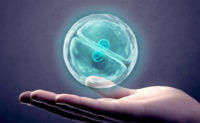科学家将干细胞再生的机制解释为它们转化为血液细胞的能力, 肝, 心肌, 骨, 软骨或神经组织,从而修复受损的器官, 通过产生各种生长因子, 恢复其他细胞的功能活性 (according to the so-called paracrine type).
For clinical purposes, stem cells are most often obtained from bone marrow and cord blood, also after preliminary stimulation of hematopoies, the amount of stem cells needed for treatment can be isolated from the peripheral blood of an adult. In recent years, more and more reports have appeared in the world about the clinical use of stem cells isolated from the placenta, 脂肪组织, 脐带组织, amniotic fluid and even pulp of baby teeth.
Depending on the disease, age and condition of the patient, one or another source of stem cells may be preferable. For more than 50 年, 造血的 (造血的) stem cells have been used to treat leukemias and lymphomas, and this method of treatment is well known as bone marrow transplantation, although to date, increasingly in hematological clinics of the world, hematopoietic stem cells are derived from umbilical and peripheral blood. 同时, it is more appropriate to use mesenchymal stem cells, which are the precursors of connective tissue, for the treatment of head and spinal cord injuries, stimulation of fracture healing and chronic wounds.
Mesenchymal stem cells are rich in fatty tissue, placenta, 脐带血, amniotic fluid. Given the immunosuppressive effect of mesenchymal stem cells, they are also used to treat a number of autoimmune diseases (多发性硬化症, 溃疡性结肠炎, Crohn’疾病, ETC。), as well as post-transplant complications (to prevent rejection of the transplanted donor organ). To treat cardiovascular diseases, including ischemia of the lower limbs, the most promising is cord blood, which contains a special kind of so-called endothelial progenitor stem cells, which are no longer found in any tissue of the human body.
Cell therapy can be autologous (its own cells are used) and allogeneic (捐赠者). 然而, considering that each nucleated cell of the human body has certain immunological characteristics (HLA phenotype or immune passport), the use of donor stem cells requires immunological compatibility. This fact makes it expedient to bank own stem cells, frozen while the person is still young and healthy. In this aspect, the umbilical cord blood of a human being – the source of several unique stem cell lines – has indisputable medical and biological value.
Treatment with stem cells can be based on both their intravenous administration like a drug and directly into damaged tissue. In recent years, the method of intraosseous stem cell transplantation of umbilical cord blood has been increasingly used, which contributes to their faster engraftment. Also developed method of introducing stem cells directly into the coronary vessels (with coronary heart disease, 心肌梗塞) was called cell cardiomyoplasty.
Cell therapy can be carried out both in monotherapy, and supplementing surgical or medicamentous treatment.
As a rule, in all patients after the introduction of a suspension of stem cells, activation of the functional systems of the body, normalization of the immune status and metabolic processes are noted. Patients after the course of cell therapy note a burst of energy, an increase in general vitality, a decrease in weakness and lethargy, improved appetite, night sleep, improving memory for current events, concentration and sharpness of thinking. After regenerative therapy with stem cells, there is an increase in sexual desire (libido) in both sexes and sexual potency in men.
Normalization of the emotional background is marked, depressive moods are cut off, willful processes are mobilized, and craving for intellectual and creative activity is strengthened.

